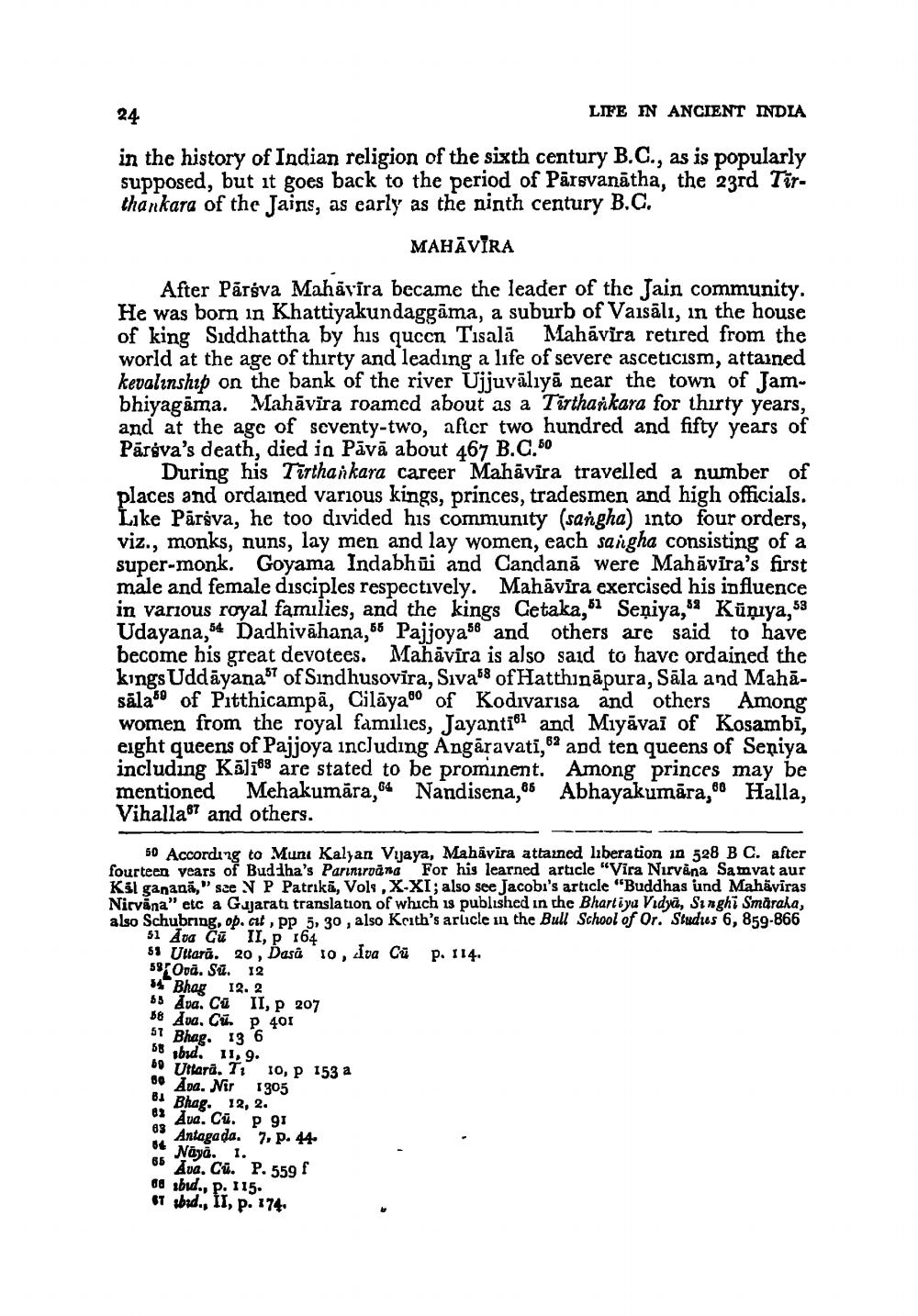________________
24
in the history of Indian religion of the sixth century B.C., as is popularly supposed, but it goes back to the period of Parsvanatha, the 23rd Tirthankara of the Jains, as early as the ninth century B.C.
MAHĀVĪRA
LIFE IN ANCIENT INDIA
After Parsva Mahavira became the leader of the Jain community. He was born in Khattiyakundaggama, a suburb of Vaisalı, in the house of king Siddhattha by his queen Tisalā Mahavira retired from the world at the age of thirty and leading a life of severe asceticism, attained kevalinship on the bank of the river Ujjuväliya near the town of Jambhiyagama. Mahāvīra roamed about as a Tirthankara for thirty years, and at the age of seventy-two, after two hundred and fifty years of Pārsva's death, died in Pāvā about 467 B.C.50
During his Tirthankara career Mahavira travelled a number of places and ordained various kings, princes, tradesmen and high officials. Like Parsva, he too divided his community (sangha) into four orders, viz., monks, nuns, lay men and lay women, each sangha consisting of a super-monk. Goyama Indabhui and Candana were Mahavira's first male and female disciples respectively. Mahavira exercised his influence in various royal families, and the kings Cetaka," Seniya," Kūņıya,53 Udayana, Dadhivahana,55 Pajjoyas and others are said to have become his great devotees. Mahavira is also said to have ordained the kings Uddayana" of Sindhusovira, Sivas of Hatthinapura, Sala and Mahāsāla of Pitthicampã, Cilaya" of Kodivarısa and others Among women from the royal families, Jayanti and Miyāvai of Kosambi, eight queens of Pajjoya including Angāravati,62 and ten queens of Seniya including Kali are stated to be prominent. Among princes may be mentioned Mehakumara, Nandisena, Abhayakumara, Halla, Vihalla7 and others.
10, p 153 a
50 According to Muni Kalyan Vijaya, Mahavira attained liberation in 528 B C. after For his learned article "Vira Samvat aur Kil ganana," see N P Patrika, Vols, X-XI; also see Jacobi's article "Buddhas und Mahäviras Nirvana" etc a Gujarati translation of which is published in the Bhartiya Vidya, Singhi Smaraka, also Schubring, op. cit, pp 5, 30, also Keith's article in the Bull School of Or. Studies 6, 859-866 51 Ava Gu II, p 164
sa Ukarā. 20, Dasa so, doa Cù
p. 114.
59 Ovā. Sū. 12 54 Bhag
12. 2
55 Ava. Cu II, p 207 58 Ava. C. P 401 51 Bhag. 13 6
58 bid. 11, 9. 69 Uttara. Ti 60 Ava. Nir 1305 81 Bhag. 12, 2. 82 Ava. Cu. P 91 83 Antagada. 7, p. 44. Nāyā. 1.
65 Ava. Cü. P. 559 f
68 ibid., p. 115. ST sbid., II, p. 174.
66




